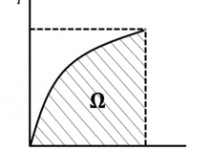The essential type of discipline and recovery for the commission of crimes
The United States has the biggest jail populace on the planet and the most elevated per-capita imprisonment rate. One out of each and every 5 individuals detained across the world is imprisoned in the United States. In 2018 in the US, there were 698 individuals detained per 100,000; this incorporates the imprisonment rate for grown-ups or individuals attempted as grown-ups. Jail, parole, and usa inmate probation activities produce an $81 billion yearly expense for U.S. citizens, with an extra $63 billion for policing (criminal regulation as it were). Court costs, bail security charges, and jail telephone expenses produce one more $38 billion in individual expenses.
Around 1 of every 36 grown-ups (or 2.8% of grown-ups in the US) were under some type of remedial oversight – the most minimal rate starting around 1996. By and large, the restorative populace has declined by 1.0% starting around 2007; while this kept on remaining valid in 2014 the quantity of detained grown-ups marginally expanded 2014. In 2016, the complete number of people in U.S. grown-up remedial frameworks was an expected 6,613,500. From 2007 to 2016, the remedial populace diminished by a normal of 1.2% every year. Toward the finish of 2016, roughly 1 of every 38 people in the United States were under restorative oversight. Also, there were 54,148 adolescents in adolescent detainment in 2013.

Reports by the authorities
- Despite the fact that borrower’s detainment facilities never again exist in the United States, occupants of some U.S. states can in any case be detained for obligation starting around 2016. The Vera Institute of Justice announced in 2015 that a greater part of those detained in nearby and province prisons are there for minor infringement, and have been imprisoned for longer timeframes throughout the course of recent years since they can’t pay court-forced costs.
- As per a 2014 Human Rights Watch report, “intense on-wrongdoing” regulations embraced since the 1980s have filled U.S. detainment facilities with generally peaceful guilty parties. Notwithstanding, the Bureau of Justice Statistics revealed that, as of the finish of 2015, 54% of state detainees condemned to over 1 year were spending time in jail for a brutal offense.
- 15% of state detainees at year-end 2015 had been indicted for a medication offense as their most serious infraction. In the examination, 47% of government detainees spending time in jail in September 2016 (the latest date for which information is accessible) were sentenced for a medication offense. This strategy neglected to restore detainees and many were more terrible on discharge than before imprisonment. Restoration programs for guilty parties can be savvier than jail.
History of penitentiaries
- During the 1700s, English givers started to zero in on the change of sentenced hoodlums in jails, which they trusted required an opportunity to turn out to be ethically unadulterated to stop or slow wrongdoing. Since no less than 1740, a portion of these rationalists started considering isolation a method for making and keeping up within a deep sense of clean individuals in jails. As English individuals moved to North America, so did these hypotheses of penology.
- Spanish colonizers in Florida additionally brought their own thoughts of containment, and Spanish fighters in St. Augustine, Florida fabricated the main significant jail in North America in 1570. A portion of the primary designs worked in English-settled America were correctional facilities, and by the eighteenth 100 years, each English North American region had a prison.
- These correctional facilities served different capabilities, for example, a holding place for debt holders, detainees of war, and political detainees, those bound in the reformatory transportation and bondage frameworks, and of those blamed for however not pursued for violations. Sentences for those indicted for violations were seldom longer than 90 days and frequently endured just a day. Unfortunate residents were frequently detained for longer than their more extravagant neighbors, as bail was seldom not acknowledged.
- One of the primary detainment facilities in America was established in 1790 by the Pennsylvanian Quakers. The Quakers needed something less brutal than prison penitentiaries. They made a space where detainees could understand sacred texts and atone for the purpose of personal development. In 1841, Dorothea Dix found that jail conditions in the US were, as she would see it, uncaring. Detainees were tied bare and whipped with poles.



